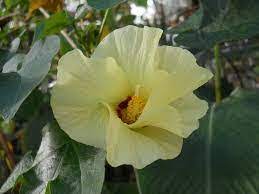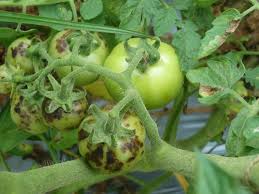Cinnamon Leaf Blades: Economic Importance, Uses, and By-Products
Cinnamon leaf blades refer to the flat, elongated structures that make up the leaves of the cinnamon tree (Cinnamomum verum or Cinnamomum zeylanicum). The leaves of the cinnamon tree are typically dark green and have a distinct aroma, which is due to the presence of essential oils.
In the culinary and medicinal worlds, cinnamon is well-known and highly valued for its aromatic and flavorful properties. Both the bark and leaves of the cinnamon tree are used, but the bark is more commonly associated with the spice that is used in cooking and baking.
Cinnamon leaves, like the bark, contain essential oils, primarily cinnamaldehyde, which is responsible for the characteristic flavor and scent of cinnamon. These oils are extracted from the leaves and used in various products, including essential oils, flavorings, and aromatherapy.
The Economic Importance and Uses of Cinnamon Leaf veins

Cinnamon (Cinnamomum verum or Cinnamomum zeylanicum) is a popular spice derived from the bark of trees in the Cinnamomum genus. Cinnamon is well-known for its aromatic and distinctive flavor, but it’s essential to highlight the economic importance and uses of not only the bark but also the leaves (leaf blade) of the cinnamon tree.
1. Essential Oil Production: Cinnamon leaf blades are a significant source of essential oil, which is extracted through steam distillation. The essential oil obtained from cinnamon leaves contains compounds such as cinnamaldehyde, eugenol, and linalool, giving it a unique aroma and potential medicinal properties.
2. Aromatic Industry: The essential oil extracted from cinnamon leaf blades is widely used in the fragrance and aromatic industry. It is used in perfumes, air fresheners, scented candles, and various personal care products due to its pleasant and recognizable scent.
3. Medicinal Uses: Cinnamon leaf essential oil has antimicrobial, antifungal, and antiviral properties. It is used in traditional medicine for its potential therapeutic benefits, including relieving muscle aches, improving circulation, aiding digestion, and promoting respiratory health.
4. Flavoring Agent: Cinnamon leaf essential oil can be used as a natural flavoring agent in food and beverages, imparting a mild cinnamon flavor to the products. It’s often used in baked goods, confectionery, beverages, and culinary applications.
5. Pharmaceuticals and Nutraceuticals: The compounds found in cinnamon leaf essential oil have been investigated for their potential health benefits. The oil is used as an ingredient in pharmaceuticals and nutraceuticals for its various properties, including anti-inflammatory and antioxidant effects.
6. Cosmetics and Toiletries: Cinnamon leaf essential oil is used in the formulation of cosmetics and toiletries due to its aromatic properties. It can be found in lotions, creams, soaps, shampoos, and other personal care products.
7. Insect Repellent: The strong aroma of cinnamon leaf essential oil serves as a natural insect repellent. It is used to deter insects and pests in households, gardens, and agricultural settings.
8. Food Preservation: The antimicrobial properties of cinnamon leaf essential oil can contribute to food preservation. It is sometimes used to extend the shelf life of certain food products by inhibiting the growth of microorganisms.
Read Also: Cinnamon Bark: Economic Importance, Uses, and By-Products
9. Traditional and Herbal Medicine: Cinnamon leaves, in their natural form or as an essential oil, have been used in traditional and herbal medicine to treat ailments such as colds, flu, digestive issues, and menstrual problems. However, it’s essential to use them under proper guidance and in appropriate dosages.
The Products and By-products That Can Be Derived From Cinnamon Leaf veins
Cinnamon leaf blades, scientifically known as Cinnamomum verum or Cinnamomum zeylanicum, are a source of valuable products and by-products. The main product derived from cinnamon leaf blades is cinnamon leaf oil, which is widely used in various industries.
Here’s a list and explanation of products and by-products that can be derived from cinnamon leaf blades:
1. Cinnamon Leaf Oil: Cinnamon leaf oil is the primary product obtained from distilling the leaves of the cinnamon tree. It has a warm, spicy aroma and is used in food, beverages, aromatherapy, cosmetics, and pharmaceuticals. The oil contains compounds like cinnamaldehyde, eugenol, and linalool, which contribute to its distinct scent and medicinal properties.
2. Cinnamon Leaf Extracts: Extracts from cinnamon leaf are often obtained using solvent extraction methods. These extracts can be used in the food and beverage industry to add flavor and aroma, and they may also have potential health benefits due to the presence of bioactive compounds.
3. Cinnamon Leaf Powder: Cinnamon leaf blades can be dried and ground to produce a fine powder. This powder is used as a spice and flavoring agent in various culinary dishes, desserts, beverages, and even as a topping for coffee.
4. Cinnamon Leaf Infusions: Dried cinnamon leaves can be steeped in hot water to create an infusion or tea. Cinnamon leaf infusions are known for their flavor and potential health benefits, including digestive support and antioxidant properties.
5. Cinnamon Leaf Hydrosol: Hydrosols are a by-product of the steam distillation process used to extract essential oils. Cinnamon leaf hydrosol is a fragrant and mildly therapeutic water-based product that can be used in skincare, aromatherapy, or as a room spray.
6. Cinnamon Leaf Residues: The leftover plant material after steam distillation can be used for various purposes, such as composting or as animal feed, reducing waste and making use of the residual nutrients.
7. Cinnamon Leaf Essential Oil By-Products: During the distillation process to obtain cinnamon leaf oil, some by-products may also be obtained, such as terpenes or other compounds that have potential uses in different industries.
8. Cinnamon Leaf Biofuel: Cinnamon leaf biomass, which includes leaves and other plant parts, can be used to produce biofuels through processes like pyrolysis or bio-oil extraction. These biofuels can serve as renewable and sustainable alternatives to fossil fuels.
9. Cinnamon Leaf Incense: The dried leaves or powdered form of cinnamon leaves can be used to create incense sticks or cones, which are commonly used in religious or spiritual rituals, aromatherapy, or simply for their pleasant aroma.
In conclusion, cinnamon leaf blades are a valuable resource for the production of essential oil, contributing to various industries including fragrance, medicine, food, and personal care. The essential oil extracted from cinnamon leaves possesses diverse uses, from adding aroma and flavor to products to potentially providing health benefits.
Read Also: Benefits, Importance and Uses of Rubber Plant









